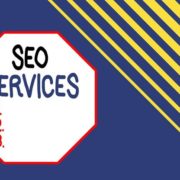IHUT Best Practices: 5 Strategies for Gathering Actionable Insights
Does your product development process feel like shooting darts in the dark? Without directly observing real customers using your offerings in their natural environments, you may encounter critical gaps in understanding, leading to wasted resources on features that users neither want nor need. This lack of insight results in wasted resources on features that users neither want nor need. How can product teams unlock transparent insights to build solutions perfectly aligned with consumer realities?
This article spotlights 5 strategies to conduct high-impact IHUTs that deliver targeted, actionable intelligence to drive strategic decision-making.
Let’s explore the best practices for selecting participants, preparing materials, analyzing findings, and applying discoveries that usher in a new era of customer-centered innovation.
The Power of Actionable Insights
Let’s first underscore why actionable insights are indispensable for organizations today. As global competition intensifies, data-fueled intelligence offers an undeniable edge. A McKinsey survey of over 1,000 marketing executives found that nearly two-thirds strongly believe that data-driven decision-making has become crucial for marketplace victory.
Consumer insights unlock immense strategic power – equipping teams to:
- Validate target positioning,
- Optimize features to match evolving preferences,
- Message precise pain points, and
- Architect customer-centric innovation roadmaps.
Ultimately, converting revelations into actions propels market share gains, and penetration into new segments, and improves retention and referrals. The numbers corroborate these benefits. Enterprises leveraging analytics to derive customer insights dramatically outperformed less data-driven peers on critical growth metrics, exceeding rivals by a staggering 85% in sales growth and 25% in profit margins.
The decision advantage gleaned from mining truths proves indisputable. Yet, while insights hold potential, they must also provide clear, constructive direction to truly catalyze change. However, not all insights lend themselves to actionable next steps. Isolating actionable intelligence remains imperative.
Crafting an Actionable IHUT: A Step-By-Step Guide
Generating high-caliber, actionable learnings from an in home usability testing demands diligence across the full process. Let’s walk through key phases – from curating representative participants that reflect your actual consumer base to analyzing results for opportunities. Note rigorous attention not just in testing, but also preparatory work proves critical.
Participant Selection
The foundation lies in participant selection – cherry-picking users that mirror distinct target segments. First comprehensively define buyer demographics to direct recruiting. Specify granular psychographics and qualities like age, income brackets, geography, family size, interests, and shopping habits. Then based on these audience blueprints, engineer screening surveys to qualify an accurate sample, avoiding convenience bias.
With each group’s needs in mind, strategically recruit to capture sufficient segment diversity – empowering spotting nitty gritty differences in desires. This tailored enrollment approach gives the feedback longitude you need. Supplement with pilot testing materials to further refine instruments before launch.
Vetting your test subjects and tools ensures the imminent IHUT yields practical consumer truths – not vanity data.
| User Segment | Target Recruitment | Rationale |
| Young Professionals | 25 participants | Early adopters, influencers |
| Middle-Class Families | 15 participants | Majority buyer base |
| Retirees | 10 participants | Significant disposable income |
Test Material Preparation
With strategic participant recruitment completed, shift focus to constructing water-tight testing instruments. Reliable results hinge on materials tuned to realistically elicit authentic reactions. Begin by compiling an instruction guidebook that comprehensively explains the testing methodology, schedules, required tasks, measures for success, and more.
Removing procedural guesswork and variability pays dividends for consistent, credible outcomes. Next, develop smart use case scenarios that align testing activities to natural consumer habits with the product – preparing common recipes for a kitchen appliance or cleaning routines for new detergents. Additionally, conduct pilot tests with a friendly group to catch confusing language or flawed designs beforehand, then refine materials to perfection.
In-Home Testing Process
With rigorous front-end prep complete, launch the meticulously designed IHUT. Manage this live phase actively to safeguard reliable results.
Schedule testing for 2-4 weeks to capture both promising early feedback but also identify potential changes in sentiment over an extended product trial. Limit researcher contact during the field window to prevent skewing authentic behaviors – the Hawthorne Effect proves ever-present. Provide technical support channels in case of questions while observing protocols. Concurrently, remotely monitor protocol compliance to guarantee adherence, quickly addressing issues like equipment malfunctions.
Additionally, collect rich multivariate data – surveys on perceptions, granular product/feature usage metrics, video reactions, and user diaries documenting the experience. Comparing subjective self-reports against actual habits reveals deeper truths. Analyze progressively instead of waiting for completion to identify emerging themes and refine approaches in an agile fashion.
Following in-home testing and monitoring disciplines bolsters conclusions. Studies show that 72% of companies with successful personalization strategies have proven IHUT oversight practices in place.
Analysis for Actionability
With a bounty of rich insights gathered from the strategically orchestrated IHUT, rigor now continues into the analysis phase. Both quantitative and qualitative methods prove indispensable for converting observations into opportunity roadmaps.
Statistically analyze usage data to reveal behavioral trends – contrasting product interactions across consumer segments. Hypothesis test for statistically significant differences in habits by age, profession, and tech savviness. Examine correlations between usage intensity and satisfaction ratings along with isolating outliers. Additionally, systematically code and tally emotional reactions, complaints, and delights demonstrated in tape recordings to quantify desirability. Finally, through coding participant diaries, pinpoint recurring themes that highlight unmet needs or objections.
Cross-referencing these quantitative, ethnographic, and textual analyses provides hard evidence on where product-market fit falters and the ability to size target segments’ relative value. Analysis should crystallize tangible next steps for optimization.
Reporting for Impact
The true power of even the most groundbreaking discoveries depends on persuasive communication. Effectively showcasing IHUT insights in consumable formats precipitates action across stakeholder groups – from executives to engineers.
Lead with crisp executive summary reports that concisely spotlight major revelations and explicit next-step recommendations. Busy decision-makers want bottom lines up front. Back assertions with supporting data visualizations that allow quickly grasping key quantitative themes at a glance through charts – spotlighting trends, differences, and outliers. Use visuals to reinforce arguments rather than dense data tables. Finally, prepare Robert Cialdini-worthy presentations to steer leadership toward backing high-potential opportunities that surfaced through the research.
Vivid reporting removes barriers to insights altering products and experiences for years to come. Invest in compelling packaging around your priceless discoveries.
Final Thoughts
Unlocking transparent consumer truths fuels winning product and experience enhancements aligned to user reality. While the journey requires diligence across participant recruitment, test design, and vigilant fieldwork, discoveries manifest improvements that allow teams to seize new frontiers.
Equipped with this validated playbook, you now hold the keys to conducting IHUTs that catalyze targeted, data-driven decision-making through harvesting customer gems. The future starts at the epicenter of the user – their world grounds direction. It is time to master the methodology that unlocks innovation.
Frequently Asked Questions
-
How can IHUTs be tailored to different product categories?
IHUTs work for nearly any product used in home environments, as the testing protocols can be adapted to fit various product categories. Testing protocols simply adapt to the product habits. If testing cleaning supplies, observe customers’ cleaning routines. Tailor tasks and measures to fit the natural usage contexts while adhering to the methodological best practices outlined above.
-
What are the key challenges in ensuring the reliability of IHUT data?
Rigor throughout the process protects data credibility. Start with proper sampling – convenience recruiting skews perspectives. During testing, limit contact to prevent the Hawthorne Effect of users altering behaviors when watched. Emphasize multi-source data from surveys, quant usage metrics, user videos, and self-reported diaries. Cross-validate findings.
- What are the emerging trends in IHUT methodologies?
We see a rise in leveraging the IoT for integrated product analytics rather than relying on user self-reports alone. This enables capturing precise, unbiased usage data to augment self-reported insights. Emotion AI is also unlocking new depths of qualitative insight from video reactions. Expanding cultural IHUTs globally provides localization advantages as well.



